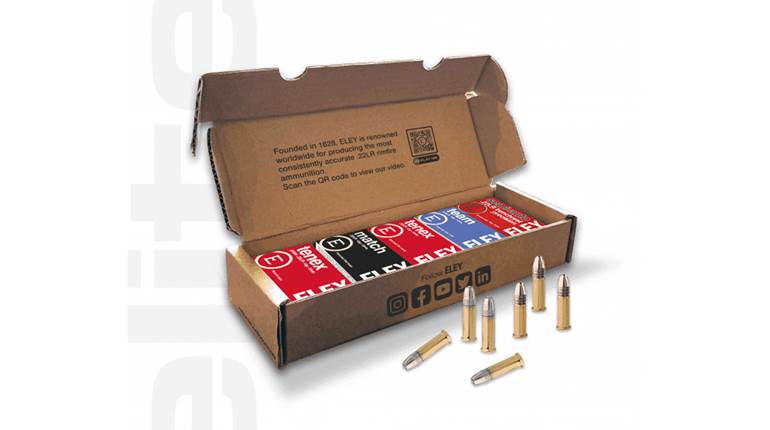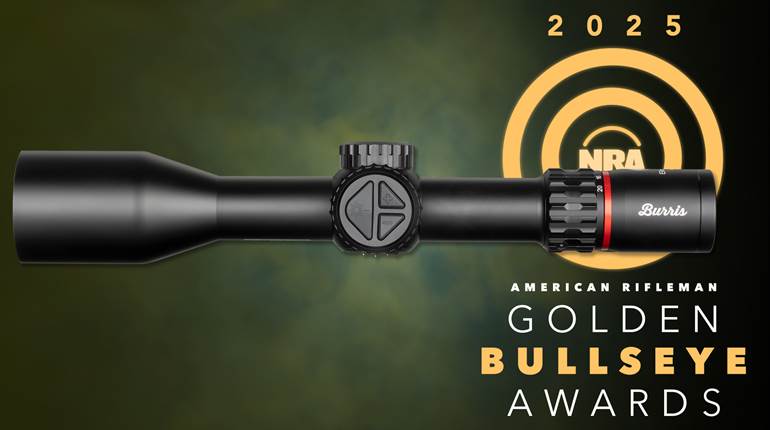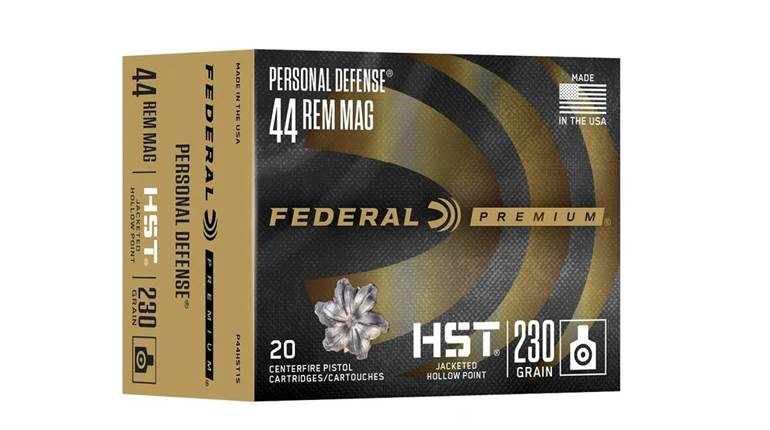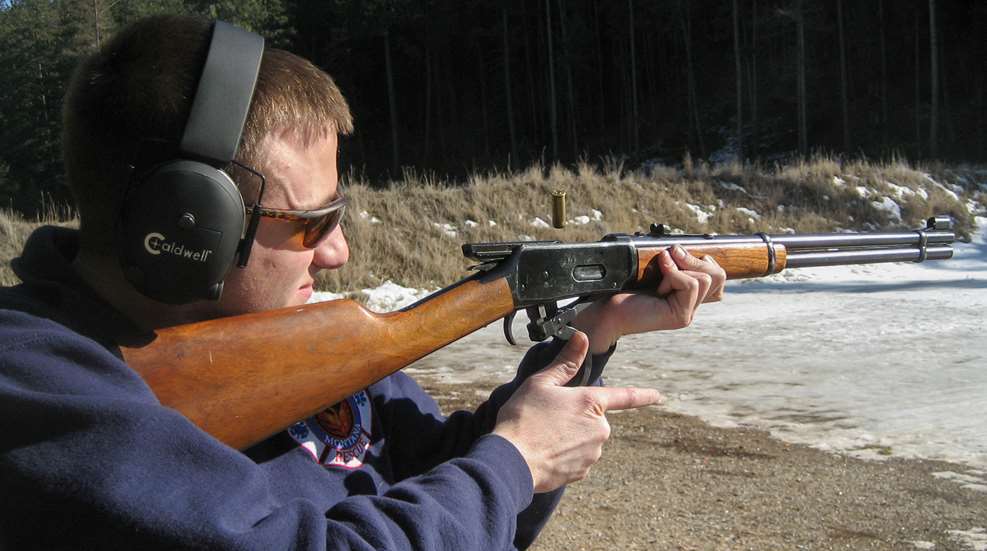
The .44 Remington Magnum is an adaptable cartridge when fired from a handgun. It is even more flexible when it can benefit from the lengthened sight radius of a long gun, which allows for a more precise aim, and a longer barrel that increases velocity to improve the cartridge’s range. All that advancement is rolled into a handy, trail-ready rifle.
Bullets
The .44 Mag. is available in plenty of bullet weights and styles, ranging from those with enough muscle to hunt big game to offerings on the mild side for shooting at targets.
My personal Winchester Model 94 carbine in .44 Mag. fires at least 100 cast lead-alloy bullets for every one jacketed bullet that I use to plink at pinecones and targets. Those plain-base bullets, such as the Rim Rock 200-grain Cowboy Hard Cast RNFP listed in the load chart, fired at about 1,100 f.p.s., will deposit a thin wash of lead fouling here and there in the bore after firing 20 shots or so. But it’s easily removed with a solvent-soaked brush.
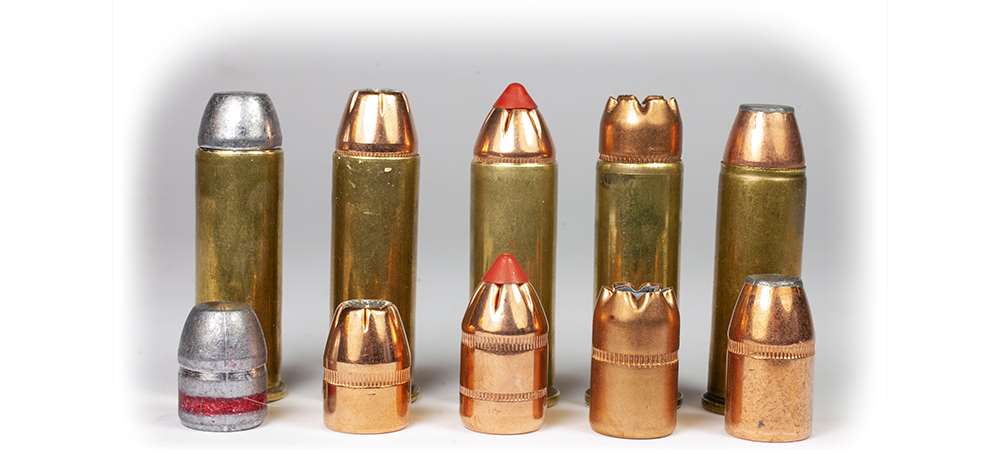
A 200-grain jacketed bullet fired at nearly 2,000 f.p.s. extends the .44’s reach. The Hornady 200-grain XTP shot at 1,947 f.p.s. from the muzzle of the Winchester’s 20" barrel hits an inch above aim at 50 yards and drops a touch less than 5" at 150 yards. It arrives at that relatively long distance still carrying 860 ft.-lbs. of energy. That’s about all that can be expected of the .44.
The only problem with shooting 200-grain bullets that fast is that they do not mesh with the Model 94’s open sights. With the rear sight set on the lowest notch of its sight elevator, the 200-grain bullets hit nearly a foot above aim at 50 yards. Substituting a Lyman 66 receiver sight helped account for lower bullet impact; even with the Lyman sight set all the way down, though, bullets still hit 4" above aim at 50 yards.
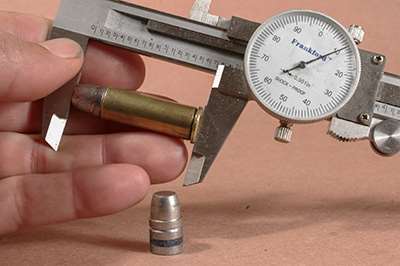
It’s strange, but the Hornady 225-grain FTX bullet actually carries a lower ballistic coefficient (BC) than the 200-grain XTP bullet. The FTX’s slender ogive and pointed tip certainly make it look as though it should cleave through the air with less resistance, but it’s just not so.
Lack of expansion on game is one criticism of some .44 bullets. Bill Noody solved that problem with the Sabre Star bullets he makes by hand at his Northern Precision Custom Swaged Bullets (npcustombullets.com) shop in New York. According to Noody, the bullets are made with a series of sharp points on the rim of the jacket’s mouth around a deep hollow cavity in its core. The opening, wide as a politician’s mouth delivering the party line, provides consistent expansion, even at modest speeds.
How accurately a .44 Mag. rifle shoots bullets heavier and longer than 250 grains depends on the rate of its rifling twist. My Model 94 .44 was made decades ago with a 1:38" rifling twist. That comparatively slow twist is similar to much older rifles chambered in .44-40 Win. Back when Winchester first chambered the 94 for the .44 Mag., the company must have figured that it and the .44-40 fired similar weight bullets and gave no thought to the fact that anyone might shoot bullets from their .44s that weighed much more than 240 grains. More recent .44 rifles, like the Henry Big Boy, are made with a faster 1:20" twist; this faster twist stabilizes long bullets 300 grains and heavier.

My Model 94 accurately shoots Speer 270-grain DeepCurl and 300-grain flat nose bullets out to 100 yards. After that, the bullets seem to lose their stability and veer off toward the moon. That’s of little concern, though, because past that distance, the energy and trajectory of the heavy bullets take a nose dive. Most projectiles even heavier and longer than 300 grains require a longer-than-maximum 1.610" cartridge length that will not cycle through a lever-action.
Propellants
Penny-pinching is a major reason to shoot cast lead alloy and swaged lead bullets at low velocities. Another is that light amounts of relatively fast-burning propellants produce good accuracy and uniform velocities from a .44 rifle. Hodgdon’s Clays, Titegroup and Universal and Alliant’s Unique, Red Dot and Green Dot are all good choices. Speaking of cheap, loading 6.2 grains of propellant under a 200-grain cast bullet results in more than a thousand rounds from a pound of Clays.
Some miserly handloaders will fire .44 Spl. cartridges in .44 Mag. chambers to further save on powder. The Magnum burns only about a grain more propellant, however, to equal the velocity produced by the Special cartridge. The toil of scrubbing out the ring of fouling deposited by the shorter Special case at the front of the chamber is, in my opinion, not worth the small amount of savings.
Comparatively slow-burning propellants provide the highest velocities with jacketed bullets weighing 240 to 300 grains. Enforcer, No. 11FS, W296 and 2400 are four good options. Enforcer paired well with the Speer 270-grain bullet delivering a velocity of 1,474 f.p.s. and a standard deviation (Sd) of 8 f.p.s. over nine shots. No. 11FS combined with the Sabre Star 250-grain bullet registered a velocity of 1,464 f.p.s. and an Sd of 17 f.p.s.

All the propellants listed in the load chart were dropped from a powder measure into cases. Standard deviations were lowest with the Enforcer/Speer pair and highest with the Northern Precision/No. 11FS.
Those low velocity spreads show Winchester Large Pistol primers worked fine with all the propellants, from a light charge of Clays to a case full of 2400. Previously, I have loaded CCI 350 Large Pistol Magnum primers to shoot the Enforcer/Speer load and Hornady 200-grain XTP loaded with 2400. The CCI and Winchester primers produced nearly the same Sd firing Enforcer. The CCI primer load did fire the Speer bullet about 30 f.p.s. faster. CCI primers generated nearly three times the Sd as the Winchester primer igniting 2400. CCI primers also fired the Hornady bullet slightly faster.
Handloading the .44 is straightforward; about the only extra step I take is to trim cases every so often. Rarely are straight-wall cases for handguns trimmed, because cases near or at maximum length expand and actually shorten upon firing. However, cases intended for the Hornady 225-grain FTX must be trimmed to a length of 1.255" to provide room for the bullet’s long ogive while still keeping a maximum cartridge length of 1.610". Case mouth rims do tend to thin after they have been belled and crimped a number of times. Just a bump of a case trimmer cutter removes weakened metal, leaving a thick rim to provide a strong crimp.
The variety of available bullet weights and styles make the .44 Mag. a versatile cartridge, and a rifle with a relatively fast rifling twist can accurately fire all of them. An assortment of propellants can be used to fire those bullets at speeds as weak or hot as desired. The word “enjoyable,” though, really best sums it up, so excuse me while I head out with my .44 in hand to put some lead back into the ground from where it came.












